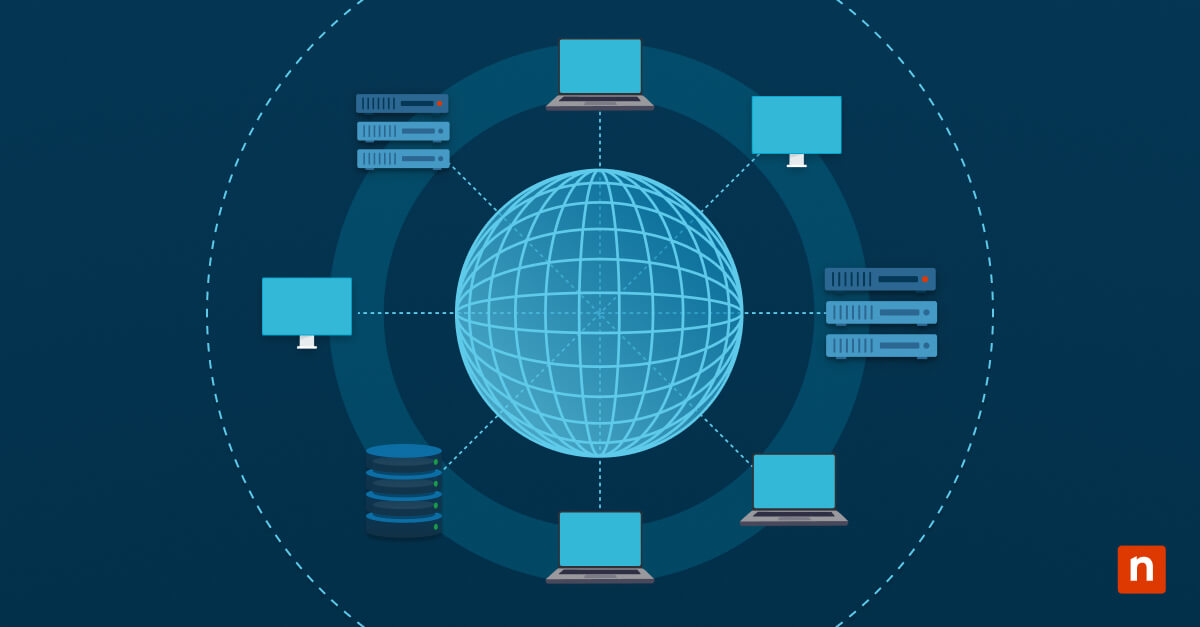Managing and maintaining IT assets is essential for a successful business. However, Capterra reports that businesses are reacting instead of preventing maintenance issues 80% of the time. Proactive IT asset management (ITAM) is made possible with a current and accurate IT asset inventory. This includes not only tracking assets but also managing them throughout their lifecycle—from procurement to retirement—across both hardware and software, as explained in our video guide on how to managing hardware and software assets.
Automate your IT inventory with NinjaOne
Get complete visibility into your IT estate with an always-updated inventory.
What is an IT asset inventory?
An IT asset inventory is a complete list of all IT assets within an organization’s IT environment. A well-managed inventory provides a central location to track items and ensure that they’re being used effectively to support business processes.
Types of IT assets
There are two main types of IT assets: hardware assets and software assets.
Hardware refers to all tangible items in the IT environment. They are the necessary physical components within an IT environment. Different types of hardware include:
- Laptops and computers
- Mobile devices
- Servers
- SNMP devices (firewalls, switches, routers, hubs, etc.).
Software refers to all the intangible items in the IT environment. In order for the software to work, it needs the physical hardware to perform tasks directed by the software. Software includes:
- Programs
- Instructions for computer operation
How to do an IT asset inventory
An IT asset inventory can be performed in a few different ways. Each method requires a different amount of time and has varying accuracy levels.
Do it by hand
This is the most basic method for creating an inventory of your IT assets. Each time you buy a device, you will need to type the information into a spreadsheet and send it to the person in charge of overseeing your assets. With this method, making an IT asset inventory can be time-consuming and not very productive.
Use an IT asset inventory management tool
IT asset management tools are a slightly more advanced inventory management tool. With this kind of tool, you type asset information into a database. The asset’s serial number can return info about the device’s manufacture or other specifications. However, any other information about the device must be input manually.
Deploy an endpoint management solution
An endpoint management tool is a best-case solution when it comes to creating and maintaining an IT asset inventory. Anytime a new device is obtained and added to your organization’s IT environment, put an agent on it so you can monitor and manage it. This will give you an automatic inventory and will continually update the inventory for you, enabling you to always have an up-to-date IT asset inventory.
Components of IT asset inventory management
Asset discovery
This component refers to identifying and cataloging the hardware, software, and network equipment of an organization. Accurate asset discovery provides visibility into what assets exist and where they are located.
Inventory management
Once assets are discovered, the most critical aspect of ITAM includes keeping a complete inventory and managing hardware and software assets. This allows IT professionals to track asset details such as where the device is, its ownership, and how it is being used. Proper management of an organization’s IT asset inventory reduces the risk of loss and makes it easier for IT teams to ensure devices are secure and performing optimally.
Lifecycle management
The lifecycle of an IT asset usually includes procurement, deployment, maintenance, and disposal. By following lifecycle management best practices, IT teams can maximize their value, improve resource allocation, minimize downtime, and ensure data security with proper disposal at the end of an asset’s lifecycle.
Compliance management
With an ITAM solution, IT teams can keep track of software licenses and get full visibility of software usage, ensuring compliance with organizational standards. Another vital part of ITAM compliance management ensuring compliance with regulatory standards such as HIPAA through constant monitoring and implementing a patch management policy to deal with vulnerabilities.
Cost optimization
ITAM allows organizations to make the most of their IT assets and can even aid in reducing costs. With a comprehensive view of all the IT assets in an organization, decision-makers can strategize and make informed decisions regarding asset purchases, resource allocation, device maintenance, and replacements.
Why IT asset inventory management is important
The importance of IT asset inventories is difficult to understate. Keeping track of devices within the company allows you to effectively manage organizational devices. It also helps you to avoid having an out-of-date inventory.
An IT asset inventory helps you to minimize extra costs associated with the maintenance of an IT environment. Major costs include:
Direct costs
Direct costs refer to any expenses related to the machines or products themselves. Without an IT asset inventory, you may not know when products have reached the end of their lifecycle and need to be replaced. The total replacement of machines is a direct cost that can quickly add up.
License costs
Apps and programs require a software license to give end users rights to fair use of the software. If employees have apps on their devices that require a license, but they’re not using it, that’s an unnecessary cost. An IT asset inventory gives you the information you need to identify and remove those apps.
Security costs
Without an IT asset inventory to monitor and manage your devices, you don’t know applications are on people’s computers. You also don’t know if they’re patched or if they could potentially be malware. These unknown risks pose potential security costs for your organization.
When to conduct and manage an IT asset inventory
The time and frequency largely depend on how you decide to perform your organization’s IT asset inventory. If you choose a method that requires manual input of device information, it is wise to update your inventory each time you gain a new device and to check your assets on a regular basis. This timing can vary from company to company, but ensure you do it often enough to maintain an updated list of assets.
When it comes to endpoint management solutions, conducting an IT asset inventory is fairly straightforward. Simply put a software agent on any new device added to the company, and it will continue to automatically send information about that inventory to the solution. This means that you’ll only have to complete an inventory once for each device, and it will be automatically updated in the future.
IT asset inventory management best practices
Effective ITAM provides many benefits such as optimizing the performance and longevity of your organization’s IT assets, reducing costs, and improving IT efficiency. Here are some best practices to implement:
1. Leverage automation tools
Automation tools streamline ITAM processes, freeing up IT teams to focus on more strategic tasks. In addition, automated ITAM software can reduce human error and ensure that IT asset inventories are updated in real-time.
2. Conduct regular audits
Periodic audits are essential to verify the accuracy of your IT asset inventory accuracy, help users discover discrepancies, uncover unused or redundant assets, and ensure compliance with software licenses, industry regulations, and organizational standards.
3. Utilize IT asset management software
ITAM software simplifies the complex task of monitoring and managing all the hardware, software, and network equipment in an organization. The right ITAM solution offers tools that make it easier to manage assets, from discovery to full lifecycle management.
Effective and efficient IT asset management allows businesses to improve asset usage, reduce costs, and ensure security and compliance. Get a more thorough breakdown of the top tips for enhancing your ITAM strategy. Read NinjaOne’s guide to ITAM best practices.
IT asset inventory management tools
Managing your IT asset inventory is an important task that can require a lot of time and detail. Fortunately, various tools have been designed to support and streamline this task. Software designed for IT asset management is a highly specialized and effective tool that can assist you in the management process.
Enhance your ITAM strategy and optimize the usage and costs of your IT assets with ITAM software.
NinjaOne is G2’s #1 IT solution for IT asset management that enables you to keep track of IT assets throughout their entire lifecycle. It enables centralized and remote IT management and requires minimal manual intervention to support. Get started with keeping an inventory of all your IT assets and see significant improvement in IT efficiency and cost-savings. Sign up for a free trial today.








